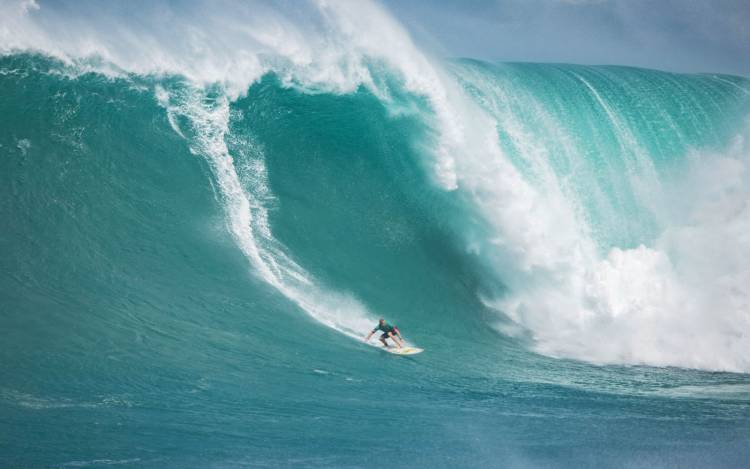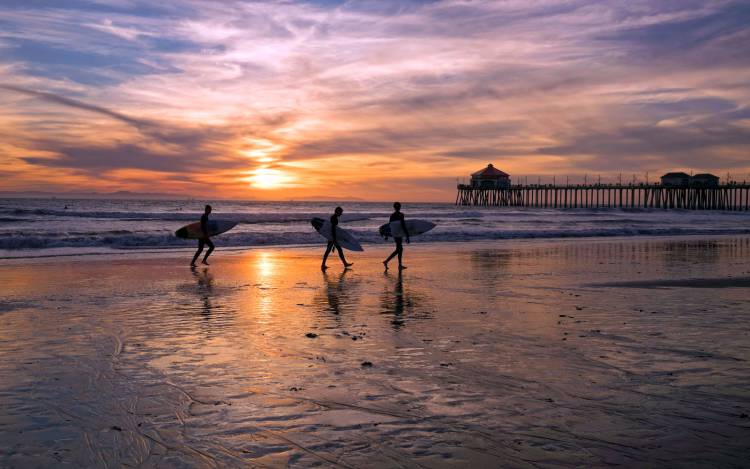Surfing in the USA & Hawaii
Thanks to the annexation of Hawaii in 1900 the USA leads the world in terms of surfing history and culture. Wave riding was popular in Hawaii at least as far back as the 15th century when the practice of "he'e nalu", or wavesliding, was considered an art rather than a sport and inextricably linked to politics - the chief was the most skilled surfer, with the best board and access to the best waves.

Effectively stamped out by European missionaries, surfing was revived in the early 20th century by Waikiki locals such as the legendary Duke Kahanamoku, who exported the practice to far flung places such as New Zealand, Australia and California.
Home to scores of fantastically powerful big waves with even bigger reputations, such as Maui's aptly-named 'Jaws' and Oahu's Banzai Pipeline, Hawaii remains at the very epicentre of global surfing. Beginners should head for Waikiki, probably the most famous beach break in the world, where the small but high quality waves are presided over by Duke Kahanamoku's statue.
Over on the mainland, California has long been known not just for its excellent waves but for its pervasive surf culture. The USA surf team makes its permanent home in Huntington Beach, a seaside city in Orange County whose waves are thought by many to be the most consistent on the West Coast, and former small towns such as Malibu have metamorphosed into giant surfing metropolises. Famous waves like Rincon, dubbed "Queen of the Coast" for its long, peeling right handers, and the infamously gnarly Mavericks still draw crowds from all over the world.
Travel north into Oregon and Washington and you will be rewarded by plenty more quality breaks which, if cooler and wetter, are far less overcrowded.

While West Coast waves benefit from a continental shelf that drops off quickly, allowing for big swells to keep their power, the East Coast is characterised by a lack of deep water near the shoreline, which makes for smaller and less consistent conditions. Not that this has prevented a thriving East Coast surf culture, even in places such as Maine, in the far north, where the gentle summer waves of Ogunquit and Long Sands Beach are perfect for learners.
There is a strong local presence at Hampton beach in New Hampshire and Narragansett Bay, Rhode Island, while The East Coast Surfing Championships, held on Virginia Beach and established in 1963, is officially the second-longest running surf contest in the world, and draws around 100,000 spectators each year.
Surfing in Florida and the Gulf Coast is dominated by Cocoa Beach, birthplace and hometown of eleven times world champion Kelly Slater. South Gulf Coast waves are storm-driven and highly fickle, although much to the astonishment of the greater surfing community locals from Indian Rocks Beach, Cory and Shea Lopez, who made it onto the world tour some years ago.
Originally pioneered by homesick ocean-dwellers, The Great Lakes Surfing Association was formed in 1966 in Grand Haven, Michigan. Today's growing community of freshwater surfers includes many who have never seen the sea, with Sheboygan, Wisconsin, hosting the largest lake surfing contest in the world.







